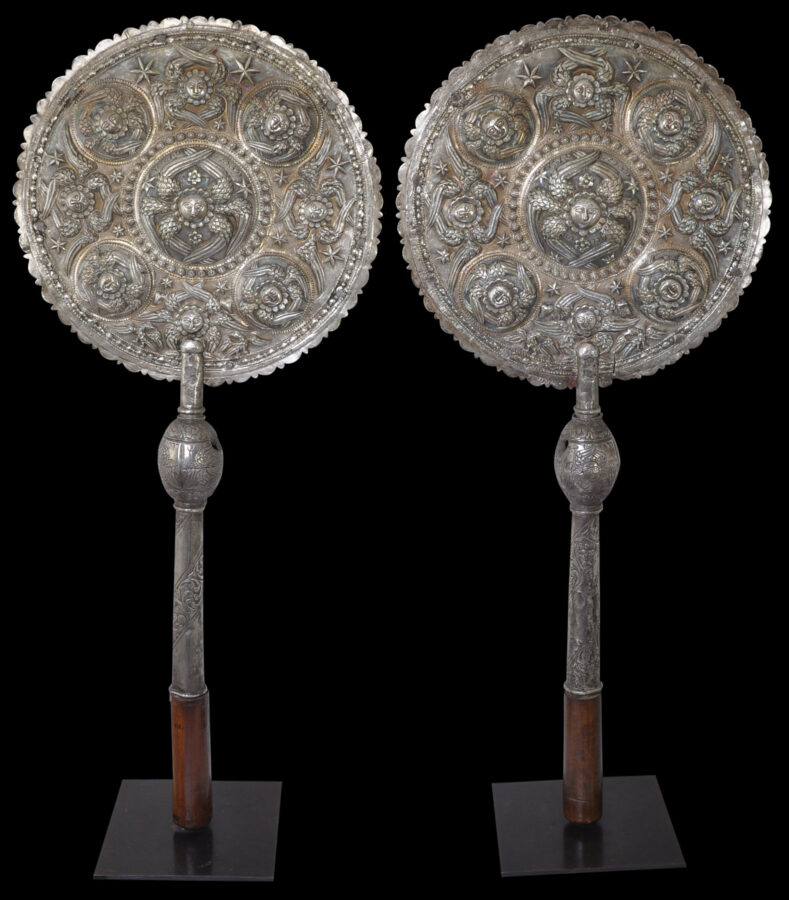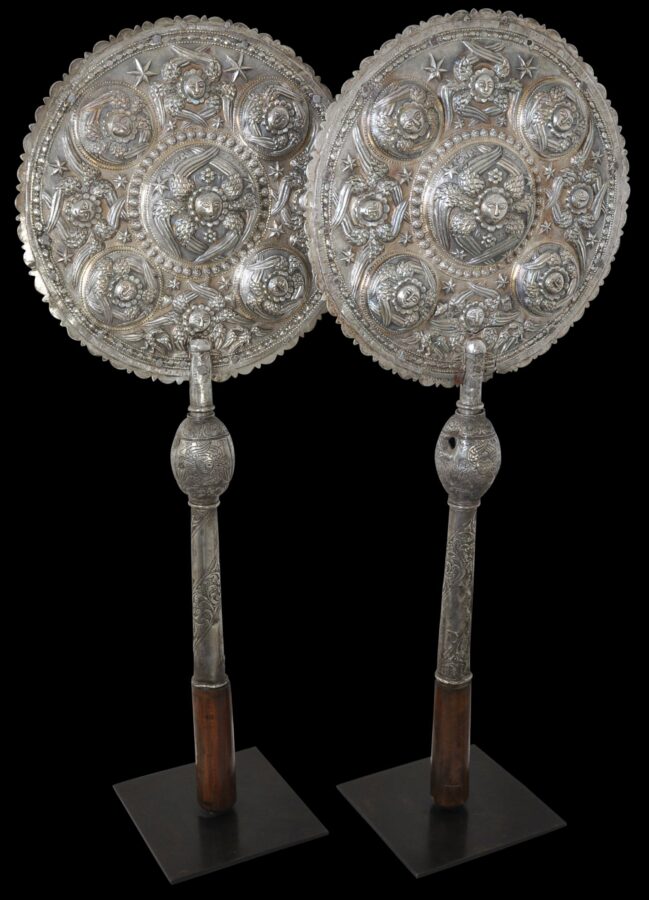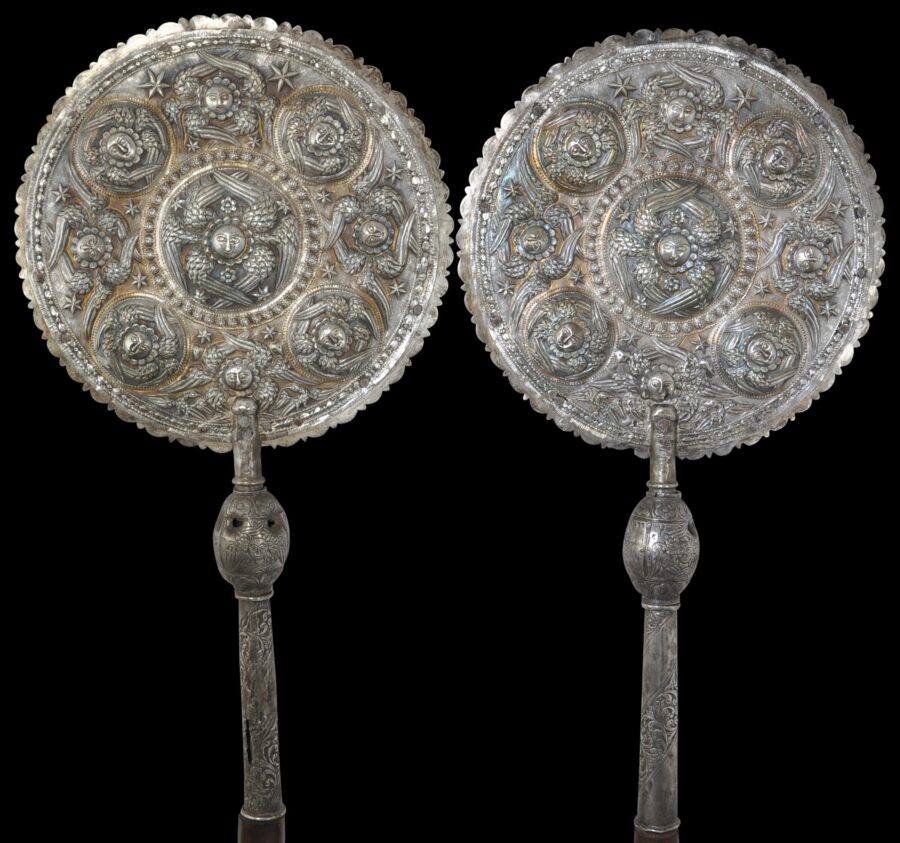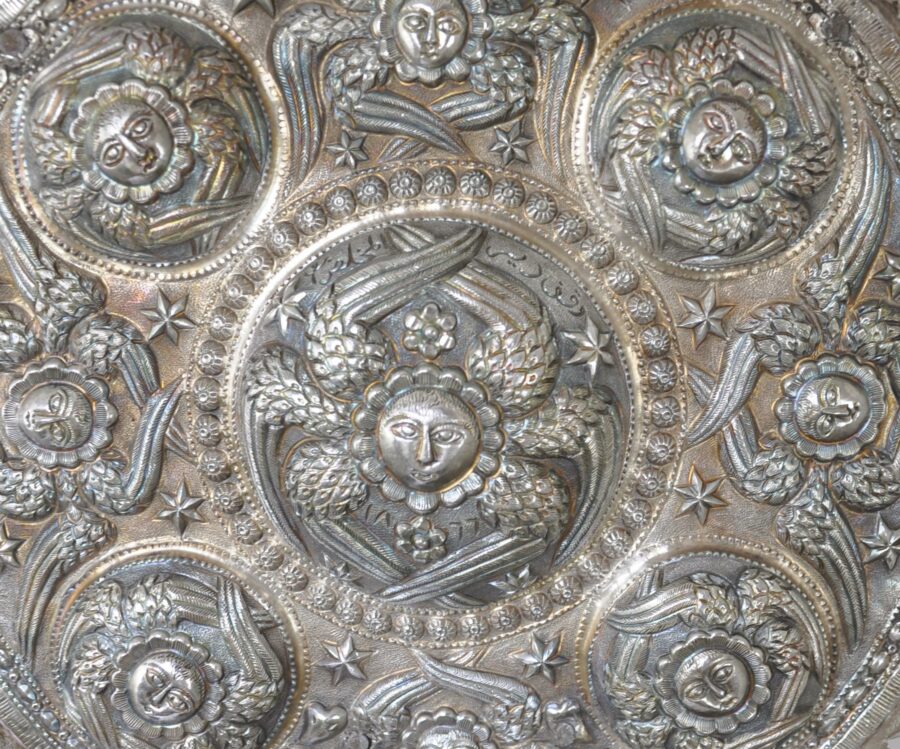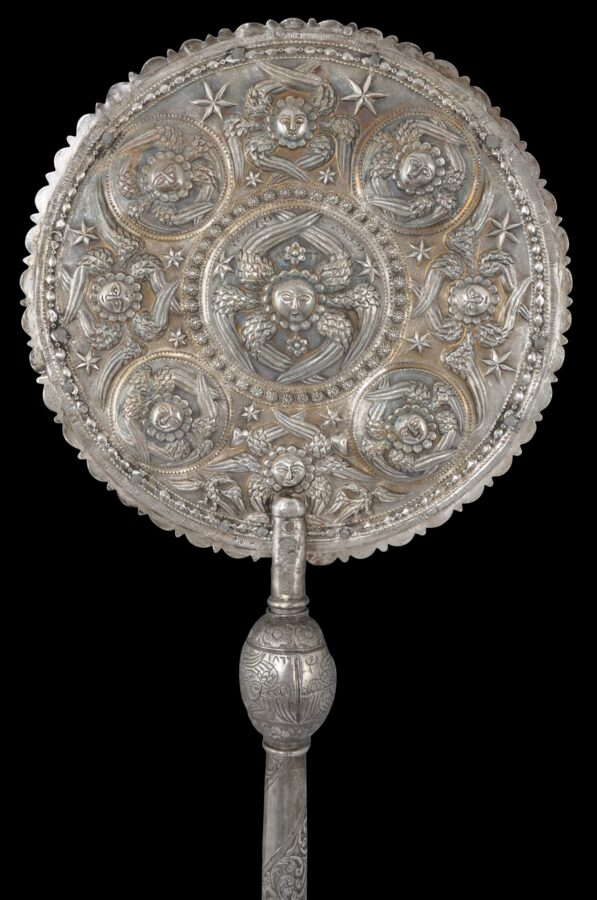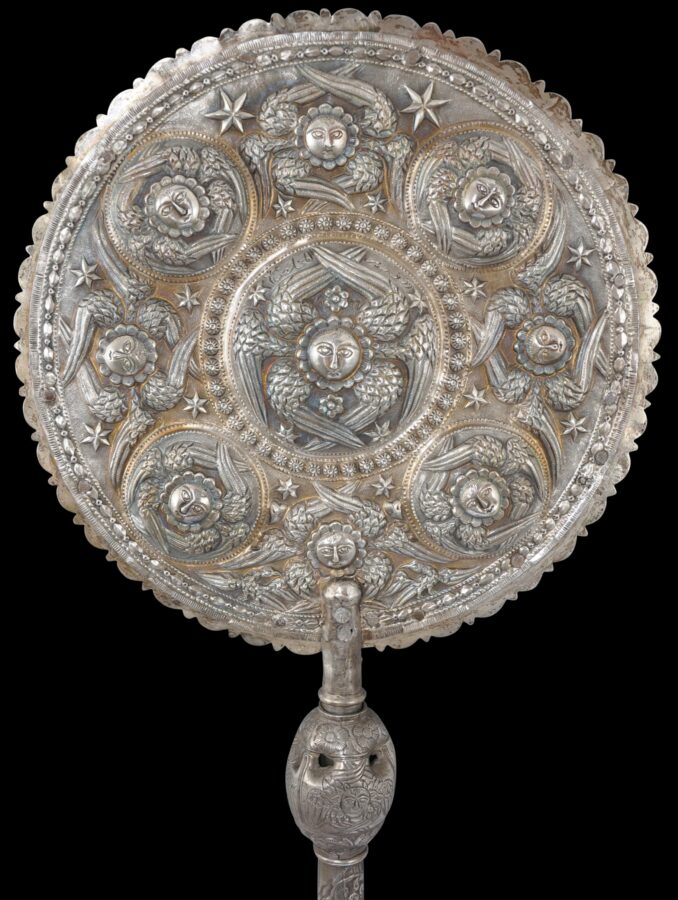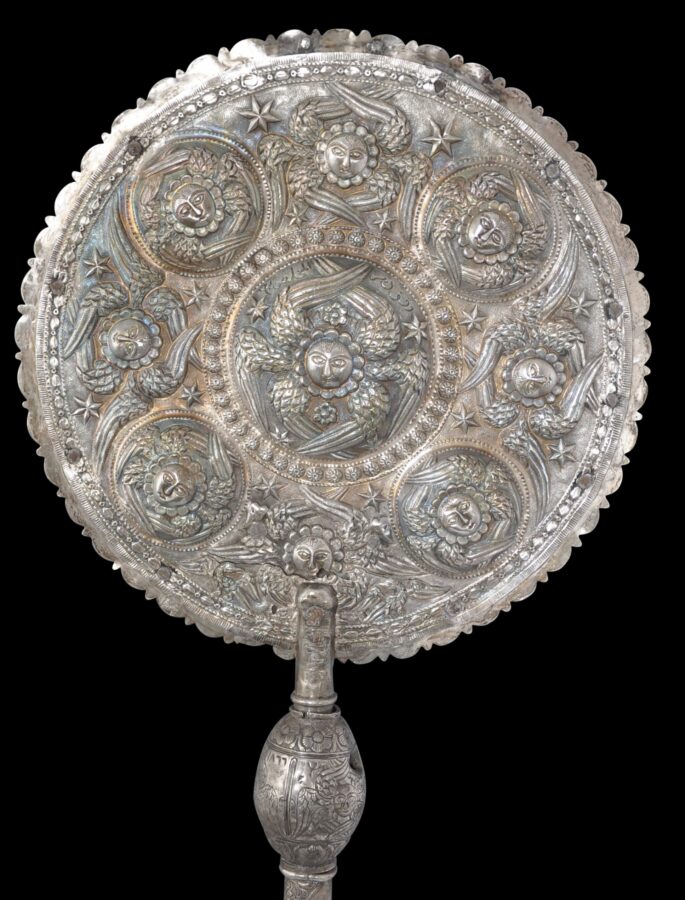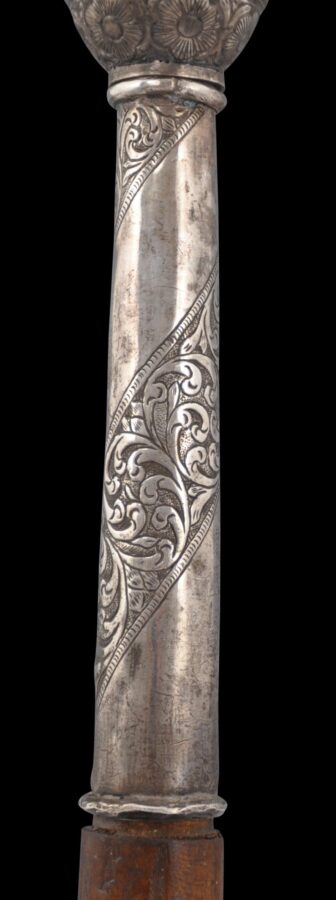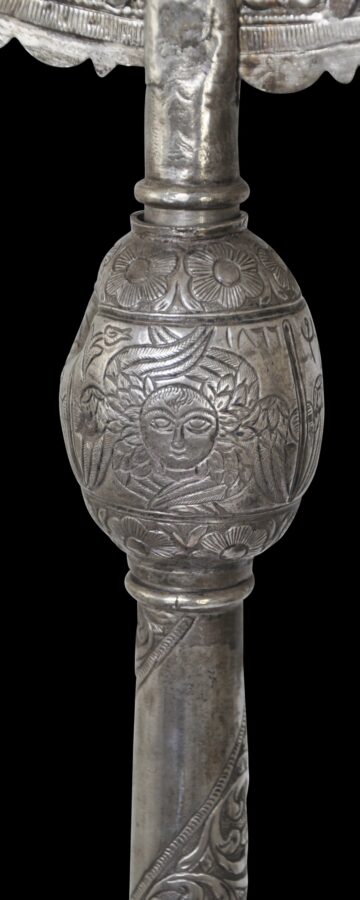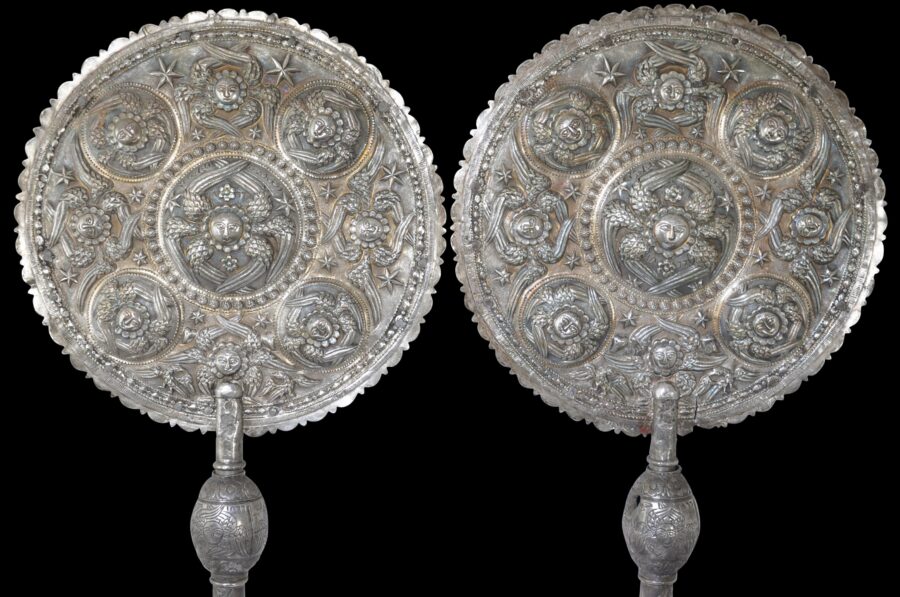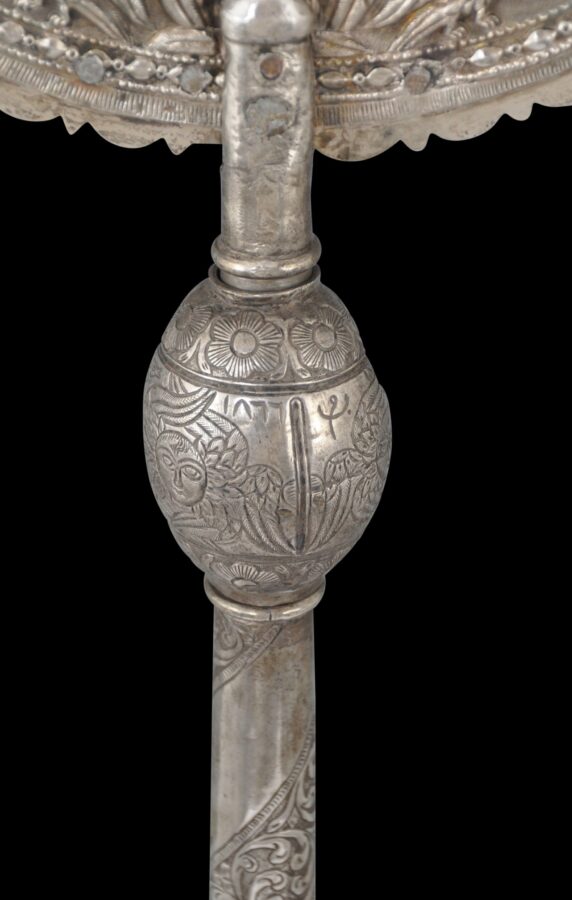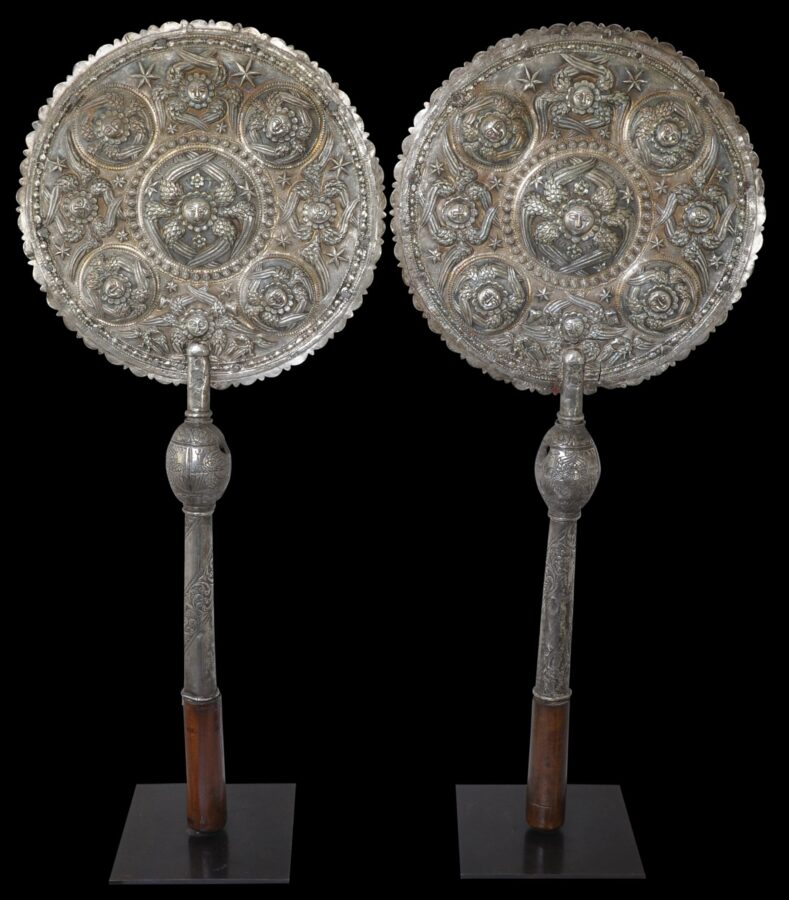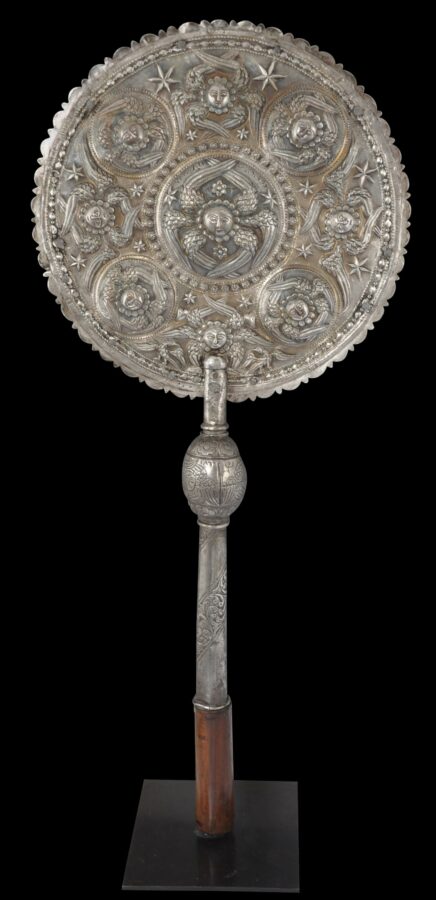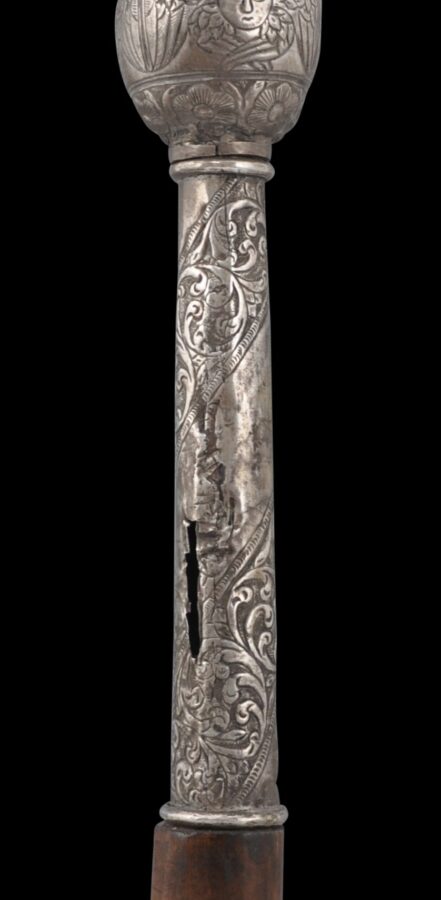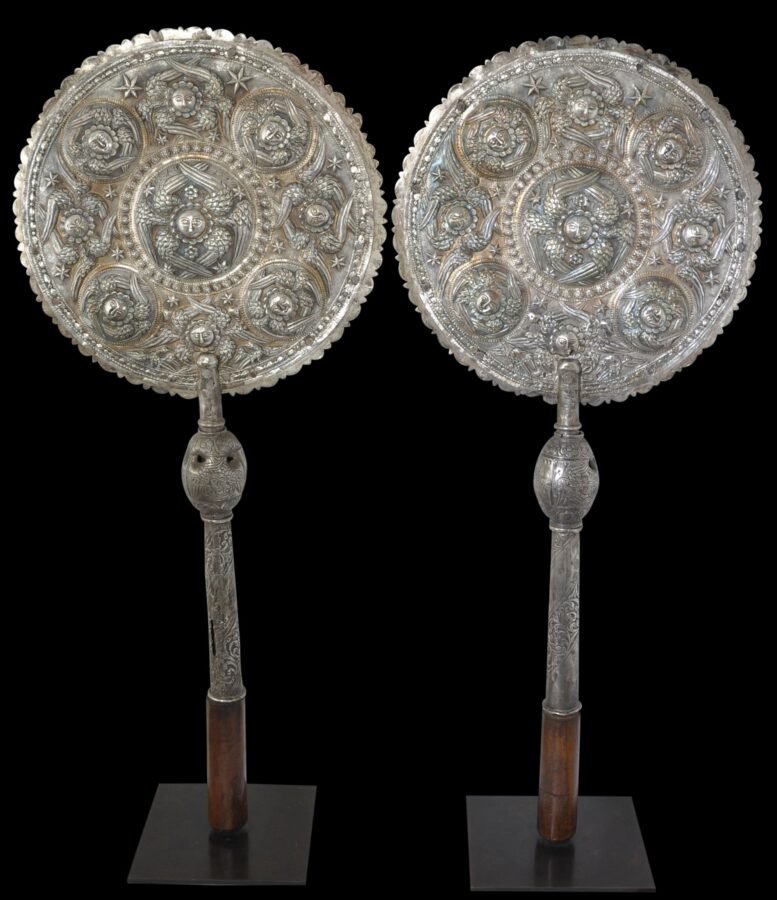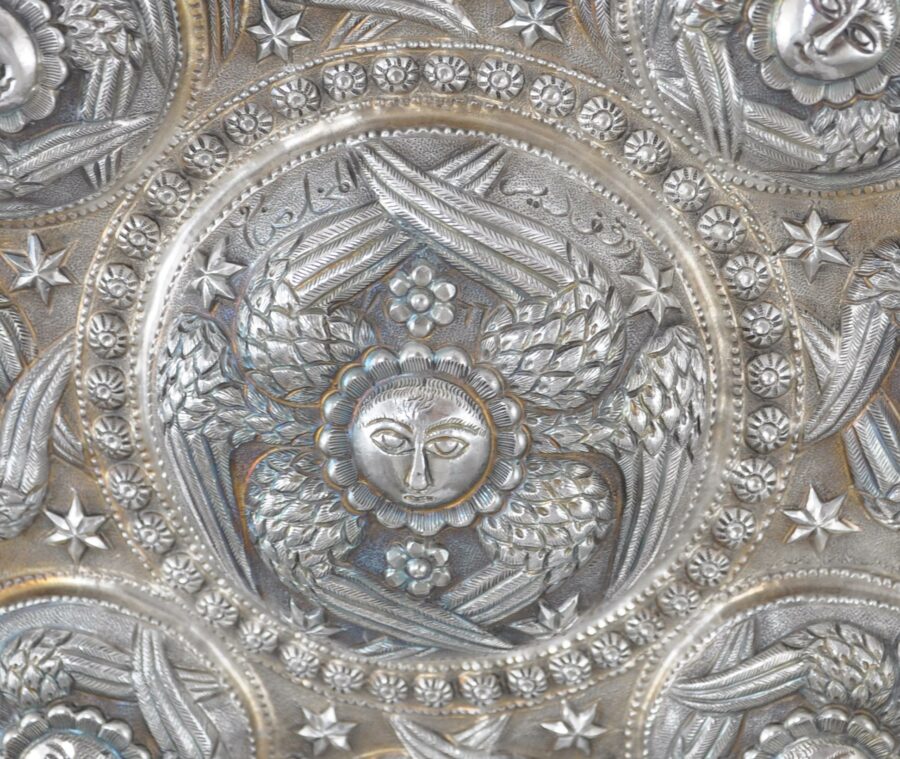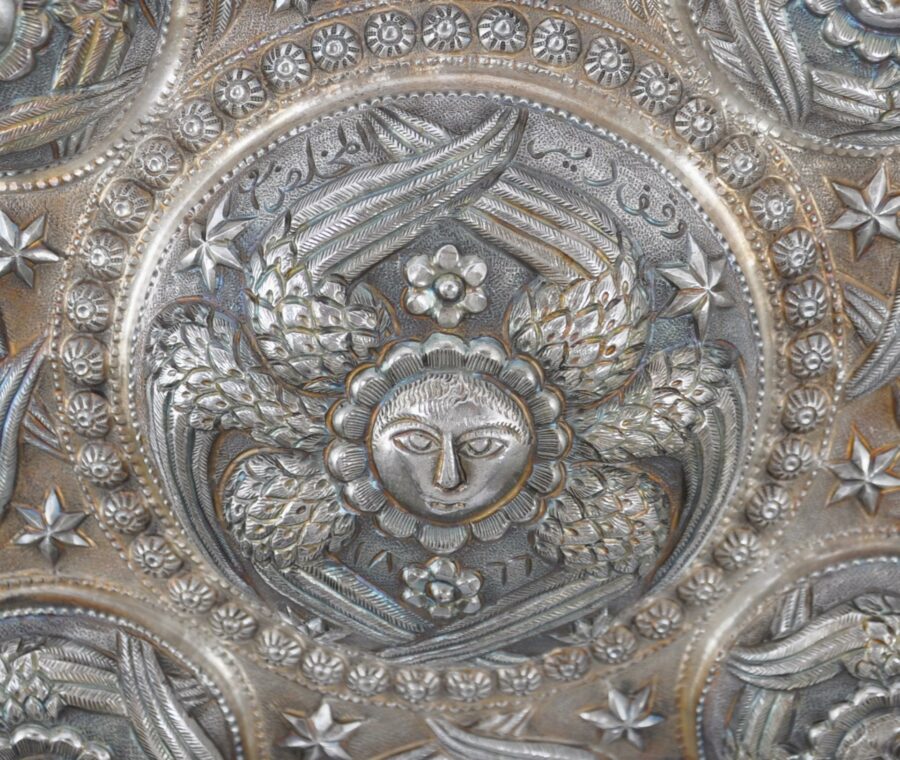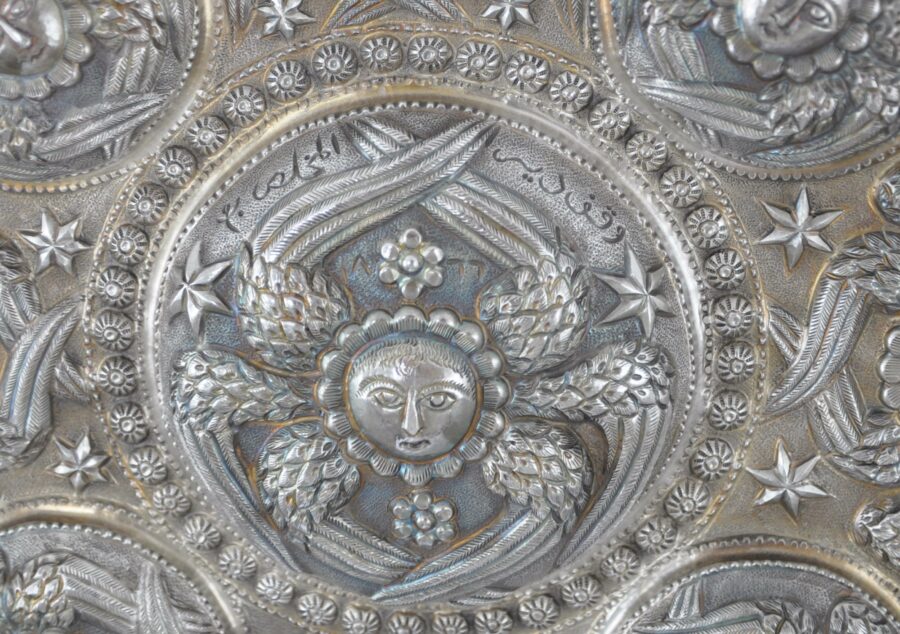Enquiry about object: 9455
Rare, Inscribed, Pair of Ottoman Greek or Armenian Gilded-Silver Liturgical Fans (Hexapteryga)
Produced for the Greek Orthodox Community in Ottoman Turkey, probably Armenian silversmithing. 18th century
height of each: 51cm, width: 26.5cm, combined weight: 1,768g
Provenance
private collection , London, UK; Sotheby's London, 2019.
This pair of liturgical silver fans in solar disk form if of a type known as flabella or rhipidion but also in their form here more specifically as hexapteryga, was made to adorn an altar in an Orthodox Greek church or monastery, and probably by an Armenian silversmith. The fans could also be mounted on poles so that they could be carried in processions as standards.In this regard they functioned as the ‘banners’ of ecclesiastic ritual.
Each is decorated on both sides with five six-winged seraphim (hexapterygon) in roundels of high relief and another four seraphim between the roundels, in lower relief, and all against finely tooled backgrounds. The fans retain traces of gilding and have scalloped edging.
Traditionally, seraphim are deemed to rank highest in the traditional hierarchy of angels, and as such are deemed to be closest to God, as suggested by their absent bodies. In Greek, they are known as the hexapterygon on account of their three pairs of wings – six wings in total. They also guard the gates of Heaven and the throne of God, and whilst so doing, sing hymns in His praise.
The imagery of the hexapterygon on these fans would have conferred protection on a sacred place. Additional hexapterygon were felt to emit rays of light. This might explain the addition of stars in the decoration on the fans, or simply that that stars are part of heaven which is the abode of the hexapterygon. The lower section of each fan disc also is decorated with a pair of eagles, squeezed beneath the lower wings of the lowest-most hexapterygon.
The spherical part of each handle is also engraved with three hexapterygon within floral borders. Additionally the handles are engraved with a helix band of vegetal scrollwork. Both these spherical sections have been punctured several times deliberately, most probably so that decorative ribbons could be inserted and secured to the fans when in processional use.
The fans’ disc form symbolises the rounded form of the seraphim. But it is also likely that the form is based on earlier versions of such fans which were made of leather or feathers and were used to fan the chalice during eucharistic liturgy so as to keep away insects. The shape is also suggestive of the sun-shaped monstrances used in churches of the Western Christian tradition to hold saints’ and other relics.
The influence of Byzantine imperial ceremonial practice on the liturgy saw such fans take on the additional role of imperial processional standards which were processed in front of Christ in his role as King during religious services (Ballian, 2011, p. 183).
Each comprises two hammered, embossed, chased and engraved silver plates that have been riveted together, and mounted on a chased, silver stem or handle with an engraved and inscribed elongated spherical knob. The handles are conical and hollow to allow the insertion of a wooden shaft so that the flabella can be carried in procession. During the ‘great entrance’ of the liturgy, the flabella accompanied the gifts that were to be consecrated. They were then held over the Gospel book during the reading of the Gospels. After this, they were placed on either side of the artophorion, a church-shaped container usually of gilded silver, in which the reserved sacrament is kept, together with and a large processional cross.
Flabella have a long history. An inventory of the treasury of the Hagia Sophia in Constantinople, made in 1396, lists sixteen gilded silver flabella (Pitarakis & Merantzas, 2006, p. 36) for example.
The examples here are similar in form and motifs to examples documented and dated to 18th century Constantinople, and so a Constantinople provenance (see Georgoula, 2005, p. 170) for example might be appropriate here. Some Constantinople examples of this form are dated to as early 1705 – see for example Ballian (2011, p. 183).
Probably of Armenian craftsmanship (and certainly seraphim are a regular motif in Armenian religious art), originally they would have been commissioned for a Greek Orthodox church or monastery. The silverwork is similar to what is typically associated with Armenian work, and indeed, Armenian craftsmen were encouraged to move and settle around the Ottoman empire on account of their skills.
Each fan has a neat, later presentation inscription in Arabic on each side and the date of the presentation (1866 AD) is given on the spherical knob in the handle. A later presentation or ownership inscription is typical of such silver – their was much fluidity with in the Ottoman world when it came to Greek and Armenian artisans, merchants and donors. Silver travelled and often was presented and re-presented. Like its owners, the silver travelled vast distances and often where it is found is not the location where it was made.
The fact that the inscriptions are in Arabic (rather than Greek) suggests that though they were likely made in Ottoman Turkey, possibly in Constantinople (Istanbul) for the local Greek community, they later travelled and were donated to a Greek Orthodox monastery or similar in the Middle East or thereabouts, where the main language of local adherents was Arabic rather than Greek.
The silver has no assay or maker’s marks. The condition of each is good but reflects their age and use. One has a hole in the handle and the other has small cracks to the lower part of the silver discs on both sides but these are stable on account of the discs being riveted together as part of their manufacture and the fact that they are likely attached to a stabilising substrate. Overall, they are highly decorate and rare.
Each comes with a custom-made wooden and metal stand.
This pair was offered at Sotheby’s London as lot 284, ‘Arts of the Islamic World’, October 2019.
References
Ballian, A. (ed.), Relics of the Past: Treasures of the Greek Orthodox Church and the Population Exchange – The Benaki Museum Collections, 5 Continents, 2011.
Galavaris, G. et al, Guide for Treasury Exhibition of the Holy Monastery of Saint Xenophon, Holy Mountain Athos, Philippos, 2000.
Georgoula, E. (ed.), Greek Treasure from the Benaki Museum in Athens, Powerhouse Publishing, 2005.
Georgoula, E., (ed.), The Greeks: Art Treasures from the Benaki Museum, Athens, Calouste Gulbernkian Foundation, 2007.
Hassiotis, I.K., et al., Aspects of Armenian Art: The Kalfayan Collection, Museum of Byzantine Culture, 2010.
Kaplani, Y., Modern Greek Silverware: From the Collections of the Museum of Greek Folk Art, Archaeological Greek Fund, 1997.
Pitarakis, B., & C. Merantzas, A Treasured Memory: Ecclesiastical Silver from Late Ottoman Istanbul in the Sevgi Gonul Collection, Sadberk Hanim Muzesi, 2006.
Sotheby’s London, ‘Arts of the Islamic World’, October 23, 2019.


